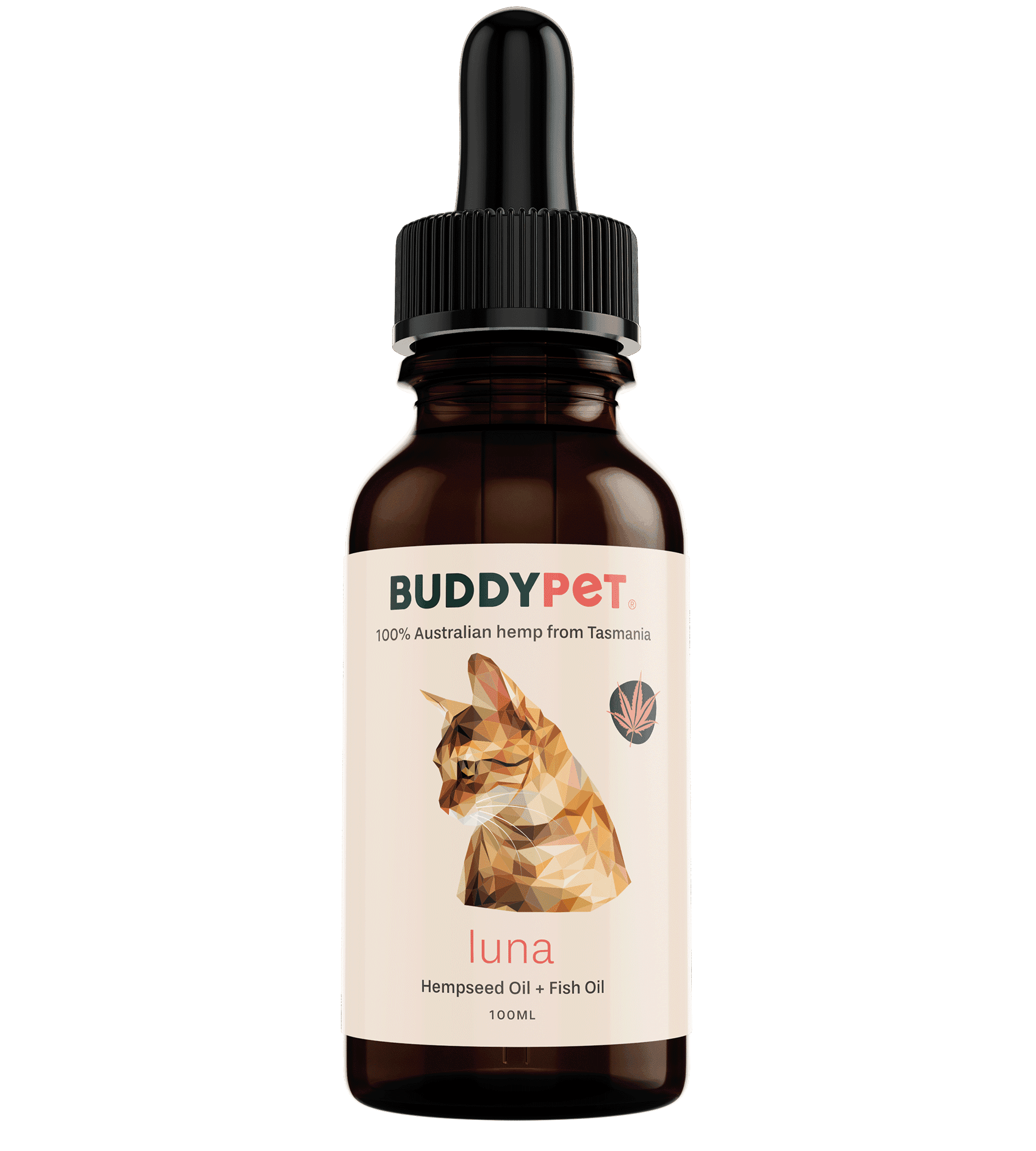Did you know that urinary tract infections (UTIs) are a common problem in both cats and dogs? Left untreated, UTIs can cause serious health problems. So, if your pet seems to be having some trouble with its bladder or urinary system, it's essential to get them checked by a vet as soon as possible.
Let’s take a closer look at UTIs, how they are diagnosed and treated, and what you can do to help prevent them from happening in the first place.
UTI Causes & Symptoms
A urinary tract infection (UTI) is an infection of bacteria that can occur anywhere along the urinary tract, which includes the ureters, kidney, and urethra as well as the bladder. The most common type of UTI is a bladder infection. When the bladder becomes inflamed it is also called cystitis. UTIs are caused by bacteria that invade the urinary tract and multiply. There are many factors that may lead to the perfect environment for this to happen, including poor hygiene, abnormal urine pH levels (too acidic or too alkaline), glucose in the urine (in diabetes) or very dilute urine due tows various underlying diseases.
The most commonly seen cause of UTI is bacteria that enter the urinary tract through the urethra. Once inside the bladder, the bacteria can multiply quickly. This bacterial over-growth will cause inflammation and irritation of the lining of the bladder. In certain cases, the infection can also spread to the kidneys. Other risk factors for UTIs include a history of bladder or kidney stones, diabetes, and immune system disorders.
Most of the infections are not serious and can be treated with antibiotics, though sometimes multi-resistant bacteria may be present and some UTIs can lead to kidney damage if they are not treated promptly.
Early diagnosis and prompt treatment are essential to preventing the infection from spreading and causing severe health problems.
The most usual symptoms of a UTI are
- Urinating more frequently, but in small amounts.
- Straining to urinate (urinary tenesmus).
- Crying out while urinating due to pain.
- Excessive licking of the genital area.
- Blood in the urine or cloudy urine.
- Unusual odour.
If your pet exhibits any of these symptoms, it's essential to take them to the veterinarian for an evaluation as soon as possible.
There are several ways to diagnose a UTI. Your vet will most likely perform a full urinalysis and may advise sending urine to a lab for urine culture. For this, they need to perform a cystocentesis, which involves taking a urine sample directly from the bladder. Based on the results of these tests, the veterinarian can determine if your pet has a UTI and prescribe the appropriate treatment.
Difference between UTIs in cats and dogs
UTIs are a common issue for both cats and dogs, but dogs tend to have a higher rate of occurrence than cats (39.3% vs 24.7% respectively[1]) due to an anatomical difference: the urethra of dogs is relatively shorter than that of cats, making it easier for bacteria to travel from rectum to the bladder.
UTIs can also cause different symptoms in cats and dogs. UTIs usually lead to increased urination, bloody urine, and lethargy in dogs. In cats, UTIs can also cause vomiting and a loss of appetite, and they might start to avoid urinating in their litter box, associating it with a place of pain.
Cats are also known to have something called Stress Cystitis. There is a reason why many cats’ parents will often refer to their cats as princes and princesses. Cats are very delicate and many have a low tolerance threshold for stress. Cats will feel extremely uncomfortable and anxious when under stress. Most of the stress triggers usually involve some changes to their territory like a new home, unfamiliar people in the house (their territory) or new fur members introduced to the family. Other triggers of stress can be changes to routine, loud noises and being taken outside their house/territory. In response to a stressful situation, cats can develop symptoms similar to UTI symptoms like pain or straining when urinating, small but frequent urinating, urinating outside their litterbox and excessive grooming of their genital area, but urine testing will show no signs of infection.
Fortunately, Stress Cystitis doesn’t require treatment with antibiotics. Some pain relief and proper hydration will do the trick, and your cat should go back to normal within a few days, assuming the triggers of stress are also eliminated. We also recommend changing to 100% wet food to increase water intake to help dilute the urine and reduce the irritation of the lining of their bladder.
It's nearly impossible to tell if a cat suffers from UTI or Stress Cystitis without some diagnostics, so don’t try to solve this puzzle on your own with Dr Google - take your cat to a vet. UTI symptoms are not something a pet parent should take lightly, hoping the symptoms will just go away; remember it can be very painful and can lead to kidney damage if not treated promptly. Sometimes, additional testing like blood tests and ultrasound will be required to properly diagnose the issue and rule out serious threats like kidney disease, tumours in the urinary tract or bladder stones.
Natural treatments for UTIs in cats and dogs
Cranberries
Cranberries contain phytochemicals that can lower the pH of the urine if it is too alkaline, help reduce the risk of infection and promote urinary tract health. It’s best to give your pet cranberry extract in the form of pills or specially developed food supplements with cranberry fruit extract powder. Do not give your cat cranberry juice as it is high in sugar and chances are your cat won’t like it. If your cat has a frequent occurrence of UTIs or Stress Cystitis, consider keeping them on cranberry supplements as part of their regular diet. But only add cranberry supplements if their urine is too alkaline.
Apple Cider Vinegar
Like cranberries, apple cider vinegar can be helpful in lowering the pH of the urine if it is too alkaline. Add half a teaspoon of apple cider vinegar to your cat’s food once a day. To make it more palatable, you could mix it with their regular wet food or tuna in springwater, or chicken/beef broth if this is something they like.
Marshmallow root
Marshmallow root is another popular herbal remedy for UTIs in cats and dogs. Made from the Althaea Officinalis plant, marshmallow root has been used for centuries to treat various ailments. Marshmallow root can help kill bacteria to reduce inflammation in the bladder and help strengthen the lining of the bladder, thereby coating and soothing the urinary tract.
Marshmallow root can be given to pets in various forms, including pills, tinctures, and solutions. It is essential to talk to your veterinarian before giving your pet marshmallow root or any other herbal remedy to avoid interactions with other medications.
Bone Broth
Bone broth is rich in glucosamine and chondroitin. Glucosamine helps restore the lining of the bladder while chondroitin helps prevent the lining from breaking down. Bone broth is also a rich source of glycine and arginine amino acids, which have been shown to reduce inflammation. Always go for organic and grass-fed bone broth.
Anti-Inflammatory dietary supplements
Hemp seed oil or fish oil. Both are jam-packed with anti-inflammatory Omega-3 fatty acids. Hemp seed oil is also rich in vitamin E (antioxidant) and arginine amino acid - both have been shown to reduce inflammation.
Medical treatment for UTIs in cats and dogs
Treatment typically involves antibiotics, which are usually given orally. With prompt treatment, most UTIs can be resolved without any lasting complications. However, cats and dogs with recurrent UTIs may require long-term management with regular antibiotic treatments or other therapies.
How to prevent UTIs in cats and dogs?
Luckily, certain things help prevent UTIs in your pet. First, ensure they have access to plenty of fresh water to stay hydrated to flush out the bladder and prevent bacterial overgrowth. Ensure you keep your cat’s litter box clean and waste-free. For dogs, make sure they are regularly groomed and clean around their back end, especially if they have a long coat. Have regular health check-ups to detect any underlying health issues that could make UTIs more likely.
[1] Hernando E, Vila A, D'Ippolito P, Rico AJ, Rodon J, Roura X. Prevalence and Characterization of Urinary Tract Infection in Owned Dogs and Cats From Spain. Top Companion Anim Med. 2021 Jun;43:100512. doi: 10.1016/j.tcam.2021.100512. Epub 2021 Jan 21. PMID: 33484889.




